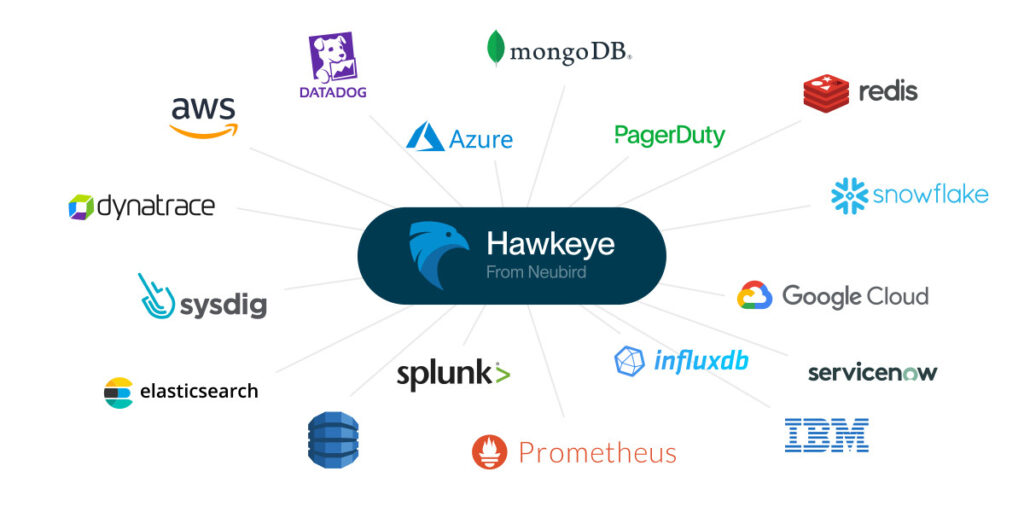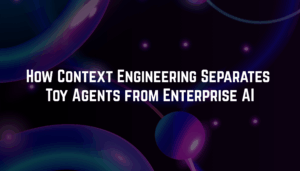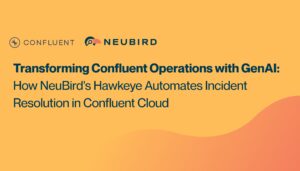Transforming AWS CloudWatch and ServiceNow Integration and Workflows with GenAI: Tackle Cloud Complexity
How forward-thinking SRE teams are tackling cloud complexity with Hawkeye
Enterprise AWS environments generate millions of monitoring data points daily across thousands of resources, instances, containers, and serverless functions. AWS CloudWatch alone tracks extensive metrics per service, compounding complexity when adding microservices, auto-scaling, and ephemeral resources. Effectively managing the operational data from these components, often tracked within ServiceNow microservices configurations or CMDBs, becomes critical. When incidents occur, SRE teams face intense pressure to pinpoint issues rapidly, but traditional manual correlation methods between CloudWatch and ServiceNow incidents cannot effectively scale.
Traditional approaches of manually correlating CloudWatch metrics with ServiceNow incidents simply can’t keep pace with this exponential growth in complexity. More dashboards, better alerts, and additional automation rules only add to the cognitive load, they don’t address the fundamental challenge of scale.
The challenge isn’t that CloudWatch fails to capture essential data or that ServiceNow lacks strong incident-management features. It is that human engineers, no matter how skilled, cannot process and correlate this volume of information at the speed required by modern cloud operations. Adding to this complexity, most organizations run hybrid or multi-cloud environments, meaning CloudWatch is just one of several observability tools teams need to master.
Consider a global e-commerce organization managing widespread AWS deployments. Their Site Reliability Engineers (SREs) sift through thousands of alerts weekly, manually creating ServiceNow incidents and correlating CloudWatch metrics across varied regions. The result: persistent alert fatigue, delayed responses, and costly errors.
The Cloud-Native Monitoring Challenge: Bridging the Gap Between AWS CloudWatch and ServiceNow
Today’s cloud environments are different from traditional infrastructure. They’re dynamic, with resources starting and stopping automatically, services scaling on demand, and configurations changing in real-time. CloudWatch captures this with:
- Detailed metrics for every AWS service
- Custom metrics from applications
- Container insights
- Lambda function telemetry
- Log data from multiple sources
ServiceNow brings order to this chaos through:
- Automated incident creation
- Workflow management
- Change tracking
- Configuration management
- Service mapping
Yet the gap between these tools gets bigger as cloud environments get more complex. Your engineers have to switch between tools, manually connect data, and piece together what’s happening across your infrastructure.
The Standard Integration Methods: Common AWS & ServiceNow Approaches
ServiceNow offers tools to connect with AWS services, from direct APIs and solutions like the AWS ServiceNow Connector to using AWS Systems Manager OpsCenter or custom AWS Lambda functions.
AWS CloudWatch Alarms with ServiceNow Integration
CloudWatch alarms start basic incident creation in ServiceNow but don’t give much detail beyond the alarm.
AWS Systems Manager OpsCenter Integration
Connects alerts from CloudWatch to ServiceNow incidents, enabling basic issue tracking.
AWS Lambda ServiceNow Integration
AWS Lambda allows custom integrations between AWS CloudWatch and ServiceNow, adding detail to incident data before sending it to ServiceNow. While flexible, these integrations take a lot of development and upkeep.
AWS Connect ServiceNow Integration
AWS Connect integrates with ServiceNow to automatically log incidents from customer interactions, making workflows smoother by connecting customer data with structured incident management.
Custom API and Integration Tools
Tailored API-driven integrations with flexibility but a lot of maintenance.
Hitting the Limits: Challenges with Conventional Integrations
These standard integration methods frequently run into scalability and operational challenges:
Manual Context Gathering
Basic alarms and incidents lack detail, forcing engineers to switch between CloudWatch, AWS consoles, and ServiceNow for analysis.
Read more: Using Splunk? level-up your Splunk & PagerDuty workflows with GenAI
Static Incident Routing
Fixed rules for incident routing often don’t handle cloud-native operations well, resulting in incidents being assigned wrong and taking longer to resolve.
Insufficient Incident Context
Auto-created tickets usually have limited info, missing key details like resource dependencies, recent changes, or past context.
Alert Fatigue and Noise
Without smart filtering, integrations flood ServiceNow incident workflows with low-priority alerts.
Complex and Costly Maintenance
Keeping custom integrations updated gets tricky and costly as infrastructure changes.
These pain points significantly limit the effectiveness of current AWS CloudWatch ServiceNow integration methods, but there’s a better way.
Meet Hawkeye: Your GenAI SRE Teammate Linking AWS CloudWatch and ServiceNow
NeuBird’s Hawkeye, a GenAI-powered solution, improves this integration by processing and connecting data quickly. Hawkeye enhances CloudWatch and ServiceNow.
Hawkeye leverages advanced GenAI capabilities to:
- Automatically identify relationships and dependencies across AWS microservices and cloud-native operations.
- Correlate CloudWatch metrics across different time scales and services.
- Detect patterns in auto-scaling and identify resource constraints affecting performance.
- Trace configuration changes directly linked to performance impacts.
- Provide proactive recommendations for cost optimization.
This analysis happens in seconds, not the minutes or hours it would take a human engineer to gather and process the same information. Hawkeye continually learns from each incident to refine future responses without compromising data privacy or security.
Beyond Simple Integration: How Hawkeye Improves CloudWatch and ServiceNow
Hawkeye’s integration does more than basic API connections. Hawkeye:
- Auto-generates targeted CloudWatch metric queries, extracting relevant data upfront.
- Correlates new incidents with historical indicators, even when initial search parameters are unclear.
- Enriches incident tickets with comprehensive context, including resource dependencies, recent configuration changes, and impact assessments.
- Provides detailed, human-readable analyses along with actionable recommendations for resolving each incident.
For CloudWatch, Hawkeye can quickly answer, “What caused recent spikes in API Gateway latency?” and make precise metric searches, adding insights such as, “Latency spikes connect to a recent Lambda deployment impacting memory.”
For ServiceNow, it quickly handles questions such as, “Which incidents are nearing SLA breaches?” and advises solutions, finding incidents that recur and suggesting automation.
This structured, narrative-driven, chain-of-thought approach transforms raw telemetry data into actionable insights, continually refining accuracy through iterative learning.
Transforming CloudWatch and ServiceNow Incident Management Workflow
The change in daily operations is big. Typical manual workflow today:
- Monitor multiple CloudWatch dashboards
- Switch between different AWS service consoles
- Manually correlate metrics with incidents
- Document findings in ServiceNow
- Track down related changes and configurations
With Hawkeye’s assistance, your engineers:
- Start with a unified view of the issue.
- Receive all necessary information for resolving incidents in a single coherent root cause analysis.
- Easily resolve routine issues through clearly outlined recommended actions.
- Obtain detailed investigation summaries for complex problems, including relevant contextual data from across the cloud environment.
- Shift their role from data gatherers to strategic problem solvers.
The Future of Cloud Operations: From Reactive to Proactive
By automating and enriching incident analysis, Hawkeye significantly reduces firefighting burdens. With more intelligent insights, SREs can shift toward proactive improvement and strategic operations. Engineers can confidently delegate routine troubleshooting; meanwhile, issues that arise overnight become less frequent and disruptive. Your newest hires ramp up faster thanks to instantly available context and detailed analyses from previous incidents.
How to Begin
Implementing Hawkeye alongside your existing tools is a straightforward process that begins paying dividends immediately. While this blog focuses on CloudWatch and ServiceNow, Hawkeye’s integration capabilities mean you can connect it to your entire observability stack, creating a unified intelligence layer across all your tools.
Read more: Using ServiceNow?
- See how you can enhance your Splunk and ServiceNow integration
- or power-up your Datadog and ServiceNow SRE workflows
Take the Next Step
Adding Hawkeye into your observability stack is easy:
- Set up read-only connections to AWS and ServiceNow.
- Start a project within Hawkeye, linking your data sources.
- Start interactive investigations, using real-time insights.
Want to transform your cloud operations? Play with our demo or contact us to see how Hawkeye can become your team’s AI-powered SRE teammate and help your organization tackle the complexity of modern cloud environments.
FAQ
What is AWS CloudWatch
CloudWatch is a monitoring and observability service built for AWS cloud resources and applications. It provides data and actionable insights to monitor applications, respond to system-wide performance changes, optimize resource utilization, and get a unified view of operational health. Learn more.
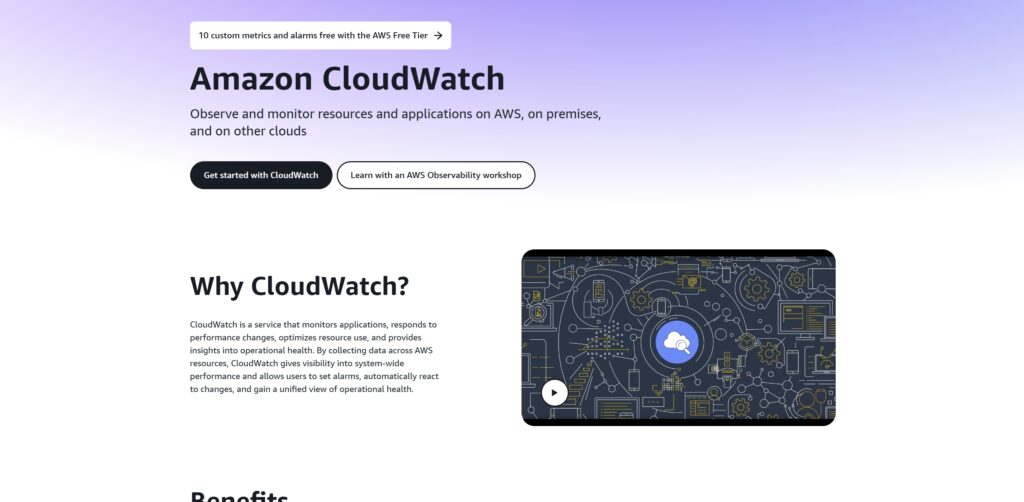
What is ServiceNow
ServiceNow is a cloud-based platform that helps companies manage digital workflows for enterprise operations. It excels at IT service management (ITSM), providing features like incident management, problem management, and change management. Learn more.
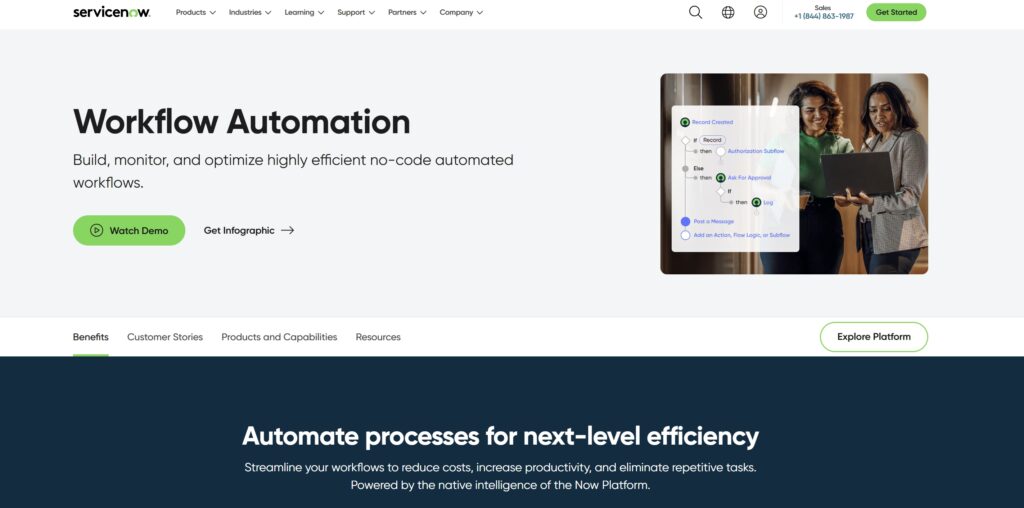
How does ServiceNow compare to AWS?
ServiceNow focuses on IT service management, offering features like incident creation, workflow automation, and change tracking. AWS, on the other hand, specializes in cloud infrastructure monitoring through tools like CloudWatch. Together, they complement each other by combining observability with structured incident management workflows.
Written by

